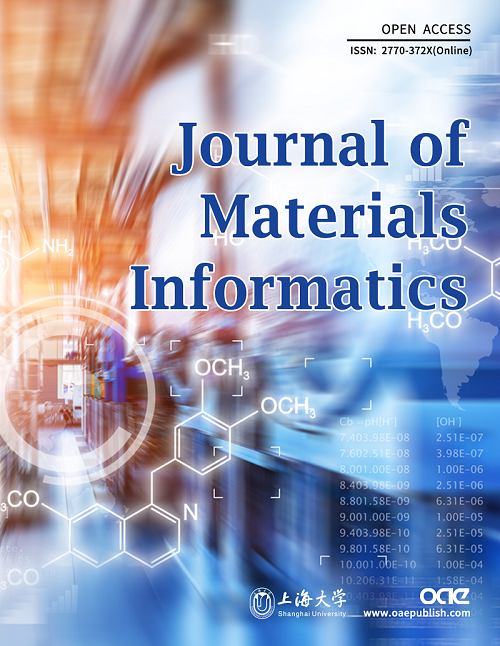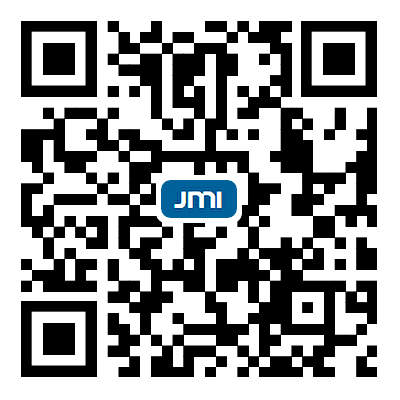REFERENCES
1. El Naqa, I.; Murphy, M. J. What is machine learning? In: El Naqa I, Li R, Murphy MJ, editors. Machine learning in radiation oncology. Cham: Springer International Publishing; 2015. pp. 3-11.
2. Jordan, M. I.; Mitchell, T. M. Machine learning: trends, perspectives, and prospects. Science 2015, 349, 255-60.
3. Butler, K. T.; Davies, D. W.; Cartwright, H.; Isayev, O.; Walsh, A. Machine learning for molecular and materials science. Nature 2018, 559, 547-55.
4. Durodola, J. Machine learning for design, phase transformation and mechanical properties of alloys. Prog. Mater. Sci. 2022, 123, 100797.
5. Liu, X.; Zhang, J.; Pei, Z. Machine learning for high-entropy alloys: progress, challenges and opportunities. Prog. Mater. Sci. 2023, 131, 101018.
6. Hao, C.; Sui, Y.; Yuan, Y.; Li, P.; Jin, H.; Jiang, A. Composition optimization design and high temperature mechanical properties of cast heat-resistant aluminum alloy via machine learning. Mater. Design. 2025, 250, 113587.
7. Mo, W.; Xiao, Y.; Huang, Y.; et al. Active learning-based alloy design strategy for improving the strength-ductility balance of Al-Mg-Zn alloys. Mater. Design. 2025, 252, 113772.
8. Liu, Y.; Zhang, Y.; Xiao, N.; Li, X.; Dai, F. Z.; Chen, M. Investigating interfacial segregation of Ω/Al in Al–Cu alloys: a comprehensive study using density functional theory and machine learning. Acta. Mater. 2024, 279, 120294.
9. Dunn, A.; Wang, Q.; Ganose, A.; Dopp, D.; Jain, A. Benchmarking materials property prediction methods: the Matbench test set and Automatminer reference algorithm. npj. Comput. Mater. 2020, 6, 406.
10. Xu, Z.; Jiang, F.; Niu, L.; et al. Magpie: alignment data synthesis from scratch by prompting aligned LLMs with nothing. arXiv 2024, arXiv:2406.08464. https://doi.org/10.48550/arXiv.2406.08464. (accessed 31 Jul 2025).
12. Pedregosa, F.; Varoquaux, G.; Gramfort, A.; et al. Scikit-learn: machine learning in Python. J. Mach. Learn Res. 2011;12:2825-30. https://www.jmlr.org/papers/volume12/pedregosa11a/pedregosa11a.pdf?source=post_page. (accessed 31 Jul 2025).
13. Chen, T.; Guestrin, C. Xgboost: a scalable tree boosting system. arXiv 2016, arXiv:1603.02754. https://doi.org/10.48550/arXiv.1603.02754. (accessed 31 Jul 2025).
14. Ke, G.; Meng, Q.; Finley, T.; et al. LightGBM: a highly efficient gradient boosting decision tree. In Advances in Neural Information Processing Systems 30 (NIPS 2017). 2017. https://proceedings.neurips.cc/paper_files/paper/2017/hash/6449f44a102fde848669bdd9eb6b76fa-Abstract.html. (accessed 31 Jul 2025).
15. Prokhorenkova, L.; Gusev, G.; Vorobev, A.; Dorogush, A. V.; Gulin, A. CatBoost: unbiased boosting with categorical features. arXiv 2017, arXiv:1706.09516. https://doi.org/10.48550/arXiv.1706.09516. (accessed 31 Jul 2025).
16. Akiba, T.; Sano, S.; Yanase, T.; Ohta, T.; Koyama, M. Optuna: a next-generation hyperparameter optimization framework. arXiv 2019, arXiv:1907.10902. https://doi.org/10.48550/arXiv.1907.10902. (accessed 31 Jul 2025).
17. Mkaouer, W.; Kessentini, M.; Shaout, A.; et al. Many-objective software remodularization using NSGA-III. ACM. Trans. Softw. Eng. Methodol. 2015, 24, 1-45.
18. Ishibuchi, H.; Imada, R.; Setoguchi, Y.; Nojima, Y. Performance comparison of NSGA-II and NSGA-III on various many-objective test problems. In: 2016 IEEE Congress on Evolutionary Computation (CEC), Vancouver, Canada. Jul 24-29, 2016. IEEE; 2016. pp. 3045-52.
19. Zitzler, E.; Laumanns, M.; Thiele, L. SPEA2: improving the strength pareto evolutionary algorithm. 2001. https://www.research-collection.ethz.ch/handle/20.500.11850/145755. (accessed 31 Jul 2025).
20. Zhang, Q.; Li, H. MOEA/D: a multiobjective evolutionary algorithm based on decomposition. IEEE. Trans. Evol. Computat. 2007, 11, 712-31.
21. Hansen, N.; Müller, S. D.; Koumoutsakos, P. Reducing the time complexity of the derandomized evolution strategy with covariance matrix adaptation (CMA-ES). Evol. Comput. 2003, 11, 1-18.
22. Das, S.; Suganthan, P. N. Differential evolution: a survey of the state-of-the-art. IEEE. Trans. Evol. Computat. 2011, 15, 4-31.
23. Boyce, B.; Dingreville, R.; Desai, S.; et al. Machine learning for materials science: barriers to broader adoption. Matter 2023, 6, 1320-3.
24. Zhang, H.; Fu, H.; He, X.; et al. Dramatically enhanced combination of ultimate tensile strength and electric conductivity of alloys via machine learning screening. Acta. Mater. 2020, 200, 803-10.
25. Jiang, L.; Fu, H.; Zhang, Z.; et al. Synchronously enhancing the strength, toughness, and stress corrosion resistance of high-end aluminum alloys via interpretable machine learning. Acta. Mater. 2024, 270, 119873.
26. Li, H.; Li, X.; Li, Y.; et al. Machine learning assisted design of aluminum-lithium alloy with high specific modulus and specific strength. Mater. Design. 2023, 225, 111483.
27. Ahmed, I. Lung cancer prediction dataset. 2025. https://www.kaggle.com/datasets/shantanugarg274/lung-cancer-prediction-dataset. (accessed 31 Jul 2025).








